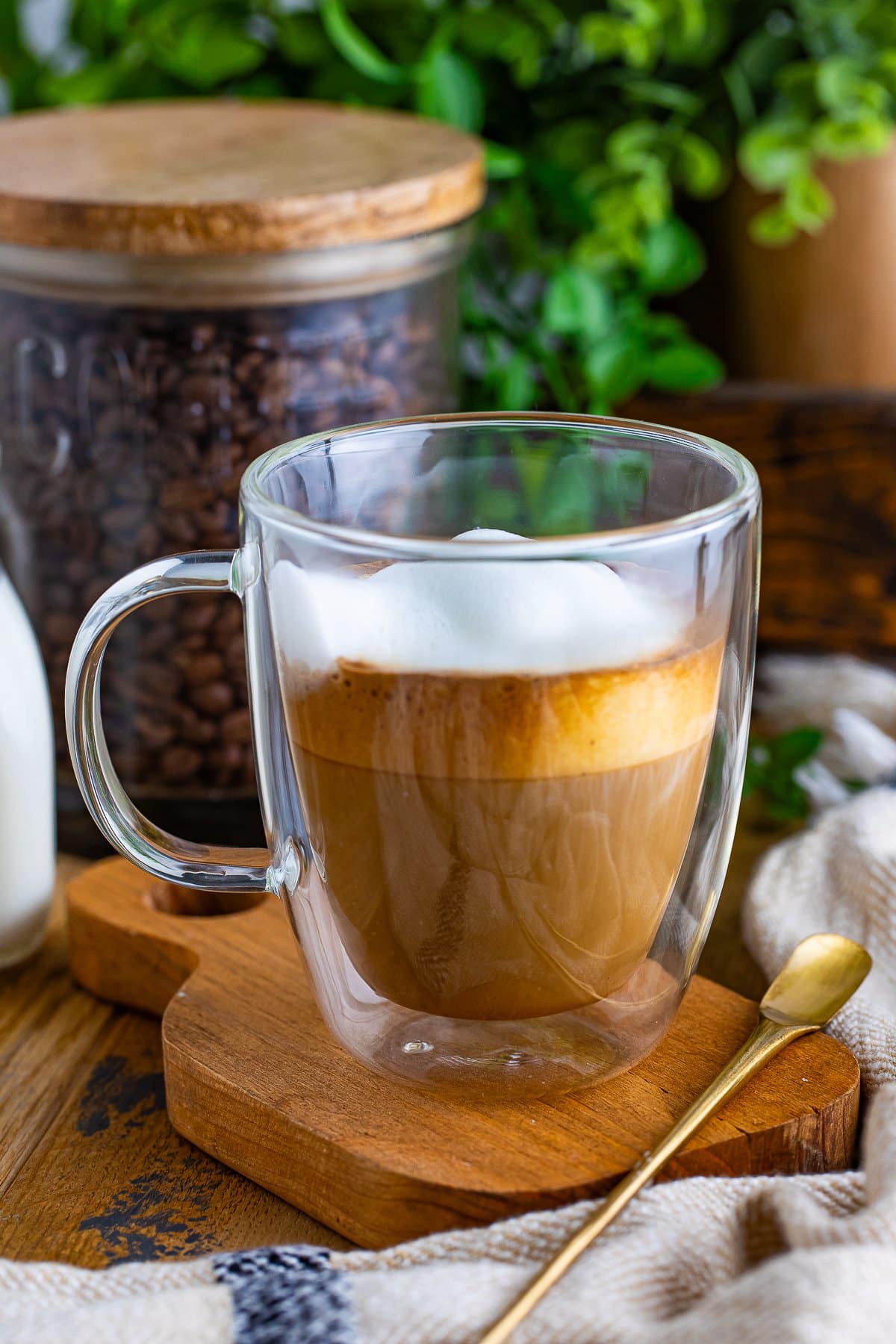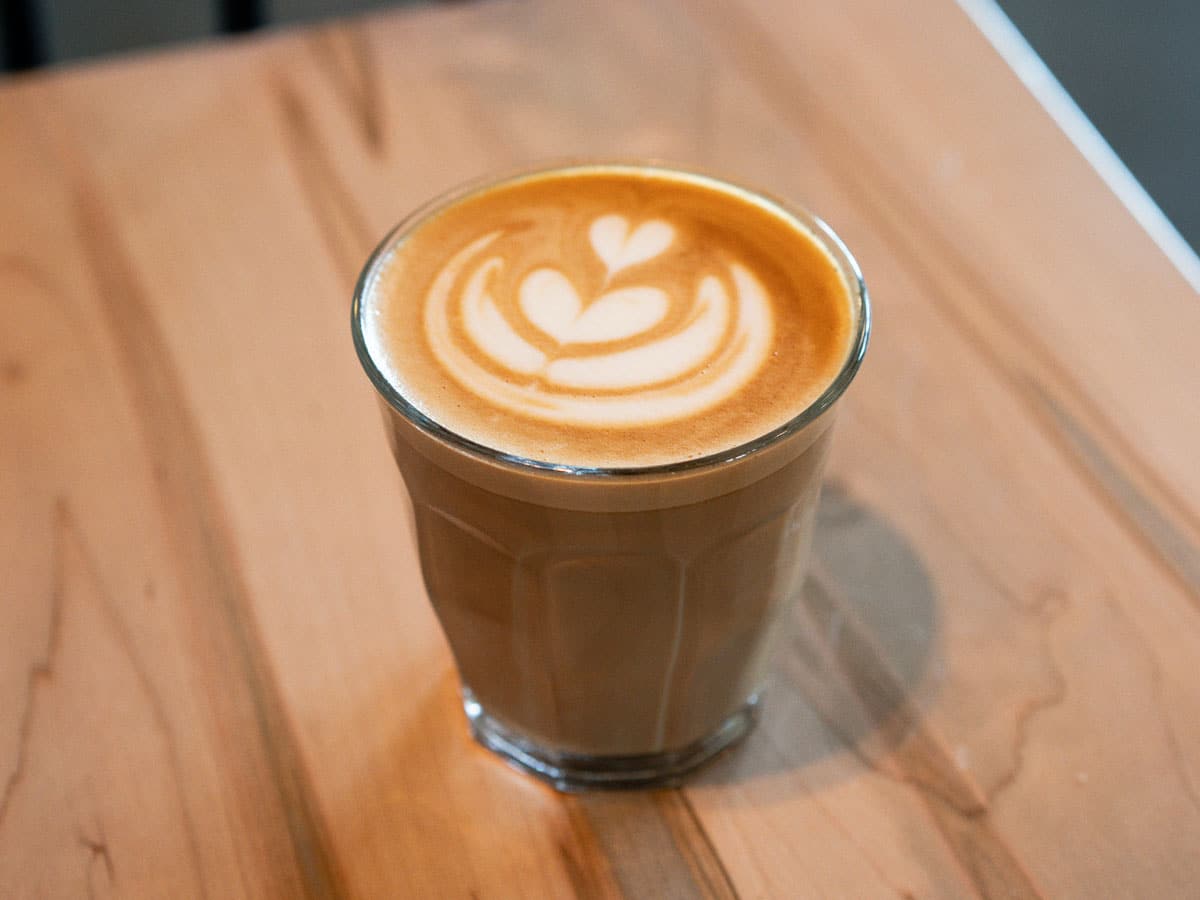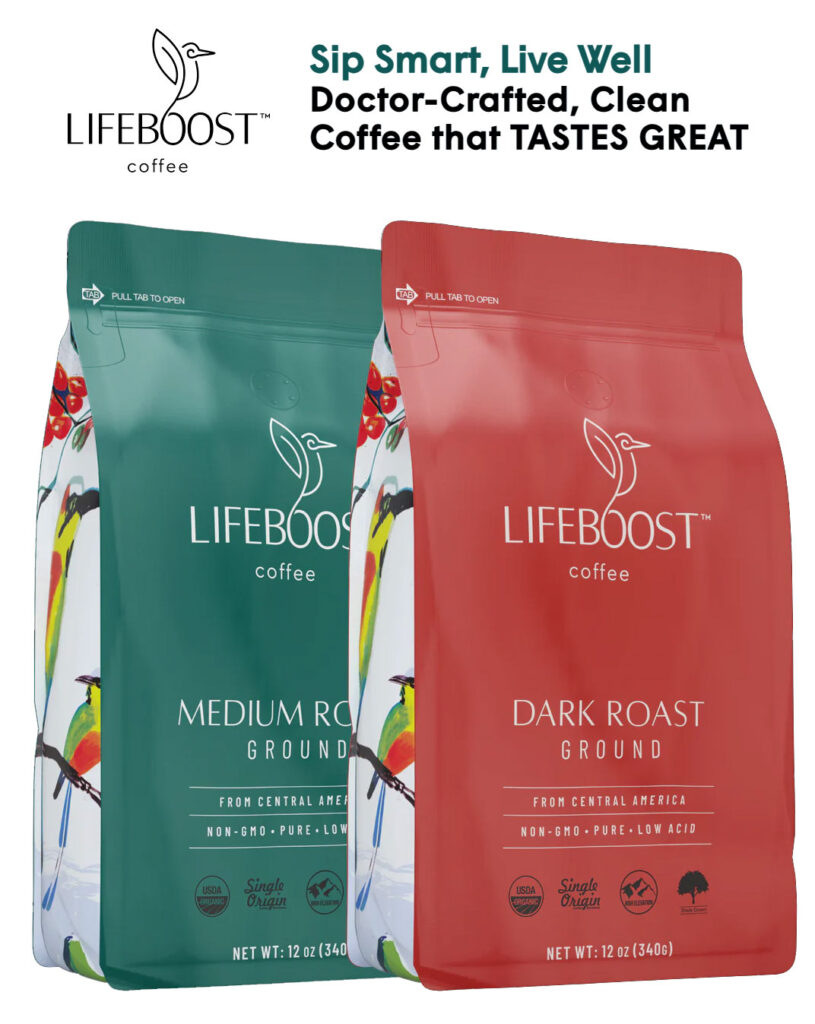The flat white has captured the hearts of coffee enthusiasts around the globe with its rich flavor and velvety texture. Originating from Australia and New Zealand, this espresso-based drink offers a perfect balance of strong coffee and silky microfoam milk. As we delve deeper into the artistry behind the flat white, you’ll discover its unique characteristics, brewing techniques, and even some irresistible variations. Whether you’re a novice or a seasoned barista, understanding the flat white will elevate your coffee experience to new heights.
What is a Flat White?
A flat white is not just another coffee drink; it’s a beloved favorite among coffee enthusiasts that offers a rich and creamy experience. Originating from Australia and New Zealand in the 1980s, this delightful beverage showcases a harmonious blend of espresso and velvety microfoam milk.
Key Characteristics of a Flat White:
- Espresso Base: A flat white typically uses a double shot of espresso, providing a robust flavor that stands up to milk.
- Microfoam: Unlike standard steamed milk, a flat white features microfoam—finely textured milk that creates a silky smooth finish.
- Milk Ratio: The milk-to-espresso ratio is crucial, usually around 1:2, resulting in a stronger coffee flavor compared to a latte.
Comparison Table: Flat White vs. Other Coffee Drinks
| Feature | Flat White | Latte | Cappuccino |
|---|---|---|---|
| Espresso Shots | 2 | 1-2 | 1-2 |
| Milk Texture | Microfoam | Steamed milk | Equal parts milk & foam |
| Milk to Espresso Ratio | 1:2 | 1:3 | 1:1 (foam to milk) |
| Overall Strength | Stronger flavor | Milder flavor | Balanced flavor |
In summary, a flat white can be described as a coffee drink that perfectly balances strong espresso with the creamy richness of microfoam, making it a unique and delightful choice for coffee lovers everywhere. Whether you’re at a café or brewing at home, experiencing this treat will surely elevate your coffee game.

The Origin of Flat White
The flat white’s journey began in Australia and New Zealand during the 1980s, gaining popularity for its unique blend of espresso and steamed milk. This coffee is not merely a drink; it encapsulates a significant cultural phenomenon.
Key aspects of the origin include:
- Cultural Roots: The flat white emerged from the local coffee culture, characterized by a strong emphasis on high-quality beans and expert brewing techniques.
- Variations in Naming: While its origins are often debated, many credit New Zealand baristas with coining the term, while others favor Australian roots. Regardless of the source, both nations proudly embrace the beverage.
- Technological Advancements: As espresso machines became more sophisticated in the 20th century, the ability to produce microfoam—a velvety milk texture essential for a perfect flat white—improved significantly.
The flat white’s moderate popularity exploded with the rise of third-wave coffee shops, expanding its reach globally. Today, many coffee enthusiasts celebrate this drink for its balance between the rich, robust flavors of espresso and the creamy, smooth texture of milk.
In essence, the flat white has transcended its humble beginnings to become a beloved staple in coffee menus around the world.
How a Flat White Differs from Other Coffees
The flat white stands out among various coffee beverages, and it’s crucial to understand what makes it unique. Here are some key differences that set the flat white apart:
- Milk Texture: The flat white features velvety microfoam that sits atop the espresso. It’s creamier compared to typical frothy milk found in lattes, making for a more balanced flavor.
- Ratio of Coffee to Milk: A flat white typically contains a higher ratio of coffee to milk. While lattes use more milk, a flat white offers a stronger coffee flavor due to less milk dilution.
- Serving Size: Flat whites are generally served in smaller cups, usually ranging from 5 to 6 ounces. This contrasts with lattes that typically come in larger servings.
- Espresso Base: A flat white contains one or two shots of espresso, providing a robust coffee punch, which can be more pronounced than in other milk-based drinks.
Comparison Table
| Feature | Flat White | Latte |
|---|---|---|
| Milk Texture | Velvety Microfoam | Frothy Milk |
| Coffee to Milk Ratio | Higher Coffee Ratio | Lower Coffee Ratio |
| Serving Size | 5-6 ounces | 8-12 ounces |
| Espresso Shots | 1-2 shots | Typically 1-2 shots |
In summary, the flat white combines the richness of espresso with the softness of milk in a way that ensures an unparalleled coffee experience. If you appreciate a strong coffee flavor balanced by silky milk, the flat white is your ideal choice!
The Perfect Milk Ratio for Flat White
Achieving the ideal milk ratio is crucial when crafting a flat white, as it defines the drink’s creamy texture and rich flavor profile. The perfect balance of milk to coffee elevates the flat white beyond just a simple beverage, making it a silky, harmonious experience.
Key Ratios to Consider
- Espresso to Milk: A standard flat white typically features a ratio of 1:3 or 1:4 (one part espresso to three or four parts milk). This ensures the espresso shines through while still maintaining the creamy consistency.
- Milk Texture: The milk should be steamed to a microfoam consistency, allowing it to blend seamlessly with the espresso while creating a velvety mouthfeel.
Ideal Volume for Your Flat White
| Ingredient | Recommended Amount |
|---|---|
| Espresso | 1 shot (30-40ml) |
| Steamed Milk | 90-120ml |
Tips for Perfecting Your Milk Ratio
- Start with Quality Coffee: Use fresh, high-quality coffee beans to ensure a bold flavor.
- Experiment with Ratios: Adjust the ratio slightly based on your personal taste preferences.
- Temperature Matters: Steam your milk to about 65°C for optimal texture without scalding.
By mastering the milk ratio, you unlock the secret to a perfect flat white that delights the palate and satisfies your coffee cravings.

Brewing Techniques for Flat White
Creating the perfect flat white requires a keen understanding of brewing techniques. Here are essential methods to master your flat white at home:
- Espresso Extraction:
- Use freshly ground coffee beans for optimal flavor.
- Aim for a double shot of espresso, extracting it within 25-30 seconds for balanced sweetness and acidity.
- Milk Steaming:
- Use whole milk for the creaminess that defines a flat white.
- Steam the milk until it reaches around 150°F, creating microfoam that blends beautifully with espresso.
- Pouring Technique:
- Tilt the cup slightly as you pour to control the flow of milk.
- Start pouring from a height to incorporate the foam, gradually lowering the pitcher to create a smooth, silky top layer.
- Ratio:
- Maintain a 1:3 ratio of espresso to milk for that classic flat white texture.
- Adjust the milk texture by incorporating air during steaming for a velvety finish.
Quick Comparison: Flat White vs. Latte
| Feature | Flat White | Latte |
|---|---|---|
| Espresso Shots | 1-2 shots | 1 shot (commonly) |
| Milk Texture | Silky microfoam | Creamy froth |
| Milk Volume | Less milk than a latte | More milk |
| Flavor Profile | Strong coffee flavor | Milder coffee flavor |
By mastering these brewing techniques, you can indulge in the rich flavors of a flat white, elevating your coffee experience.
Flat White Variations Around the World
The flat white has garnered a devoted following and has inspired numerous variations across the globe. Here’s a look at how different cultures put their unique spin on this delightful coffee drink:
- Australia: The original flat white hails from Australia, where it typically features a velvety microfoam created with fresh, whole milk. Australians love to keep it classic, offering it with or without a sprinkle of cacao.
- New Zealand: Kiwis often elevate the flat white experience by incorporating a wider variety of milk, including oat milk or almond milk, which lends the drink a distinct nutty flavor.
- United Kingdom: In the UK, coffee shops have embraced the flat white, sometimes adding flavored syrups or spices like cinnamon, catering to the local palate.
- United States: American coffee culture has adapted the flat white to cater to diverse tastes. Many cafes offer it with alternative milk options and often serve it in a larger size than the traditional Australian version.
- Asia: In countries like Singapore and Japan, the flat white occasionally features unique artisanal twists, such as incorporating matcha or local flavors like pandan.
Quick Comparison:
| Country | Variation Notes |
|---|---|
| Australia | Classic microfoam with whole milk |
| New Zealand | Often uses alternative milks |
| United Kingdom | May use flavored syrups or spices |
| United States | Larger sizes, diverse milk options |
| Asia | Unique flavors like matcha or pandan |
Each of these variations offers a glimpse into how the flat white adapts and evolves, celebrating its rich and creamy essence while embracing local tastes.
Tips for Making the Best Flat White at Home
Crafting the perfect flat white at home can elevate your coffee experience. Follow these simple yet effective tips to achieve that creamy, velvety texture and rich flavor:
- Use Fresh Coffee Beans: Start with high-quality, fresh coffee beans. Opt for specialty coffee, preferably from a local roaster, to enhance the flavor profile of your flat white.
- Grind Size Matters: Adjust your grind size to a fine setting. This ensures optimal extraction and a balanced flavor in your flat white, complementing the milk.
- Master Milk Frothing:
- Choose whole milk for a creamier texture.
- Steam the milk to around 140°F (60°C) to achieve microfoam.
- Aim for a velvety consistency with tiny bubbles, perfect for pouring.
- Perfect Brewing Ratio: Stick to the 1:3 coffee-to-milk ratio. Typically, a flat white features one shot (about 30ml) of espresso topped with 90ml of velvety steamed milk.
- Practice Your Pouring Technique: Pour the milk slowly and steadily into the center of the espresso. Gradually raise the jug to create a beautiful latte art, a hallmark of a well-made flat white.
By incorporating these tips into your coffee-making routine, you’ll enjoy a delicious flat white that rivals those from your favorite café!

The Science Behind the Flavor of Flat White
The unique flavor profile of a flat white stems from a harmonious blend of espresso and microfoam milk, creating a velvety texture and rich taste. Understanding the science behind this delightful drink involves dissecting its components:
- Coffee Beans: The choice of coffee beans plays a pivotal role. Specialty Arabica beans, known for their sweetness and acidity balance, yield a complex flavor.
- Brewing Process: A flat white typically uses a double shot of espresso, which intensifies the coffee’s boldness. The extraction process, ideally at 90-95°C, enhances the oils and sugars in the beans, imparting a deeper flavor.
- Microfoam: The magic of a flat white lies in its microfoam—made by steaming milk to a silky consistency. This process creates small, uniform bubbles, leading to a creamy mouthfeel. The milk’s natural sweetness complements the coffee, softening the bitterness.
- Milk Ratio: The ideal milk-to-coffee ratio is crucial. A standard flat white has about 1:3 proportion, allowing the espresso’s robustness to shine while the microfoam envelops it.
Flavor Comparison
| Drink | Espresso | Milk Quantity | Texture |
|---|---|---|---|
| Flat White | Strong | Moderate | Velvety microfoam |
| Latte | Milder | More | Foamier, less dense |
| Cappuccino | Bold | Equal | Thick foam layer |
In summary, the flavor of a flat white arises from its carefully measured elements, resulting in a balanced, luxurious experience. Enjoying this coffee is not just about taste; it’s a science that delivers satisfaction in every sip!
Flat White vs. Latte: What You Need to Know
When it comes to coffee, few drinks spark debate like the flat white and latte. While both are espresso-based and feature milk, key differences set them apart. Here’s what you should know:
Key Differences
| Feature | Flat White | Latte |
|---|---|---|
| Milk Texture | Microfoam; velvety and silky | Frothy and creamy |
| Milk Amount | Less milk (around 4-6 oz) | More milk (around 8-12 oz) |
| Espresso Ratio | Stronger coffee flavor (double shot) | Milder coffee flavor (single or double shot) |
| Serving Size | Typically smaller; 6 oz | Larger; 12 oz or more |
Flavor Profile
- Flat White: The balance of rich espresso and silky microfoam delivers a robust coffee flavor. It’s ideal for those who appreciate a strong coffee taste.
- Latte: With more milk, lattes offer a creamier mouthfeel but can dilute the coffee flavor. They’re perfect for those who enjoy a milder drink.
Conclusion
In summary, choosing between a flat white and a latte boils down to personal preference. If you prefer a stronger coffee taste with a creamy texture, the flat white is your go-to. Conversely, if you enjoy a lighter coffee experience, the latte is an excellent choice. Each drink has its distinct charm, making either a delightful addition to your coffee routine.
Pairing Food with Flat White
A flat white is not just a delightful beverage; it’s an experience that can be enhanced by thoughtful food pairings. Because of its rich, velvety texture and nuanced coffee flavor, a flat white complements various dishes beautifully. Here are some excellent pairings to consider:
- Breakfast Foods:
- Avocado Toast: The creamy texture of avocado syncs perfectly with the silkiness of a flat white.
- Omelettes: Choose a cheese-filled or herb-infused omelet to contrast the bold coffee taste.
- Pastries and Sweets:
- Croissants: A buttery croissant adds a flaky, delicious layer that pairs well with the smooth finish of a flat white.
- Cheesecake: The creaminess combines with the coffee richness for a decadent treat.
- Savory Options:
- Smoked Salmon Bagel: The saltiness of the salmon balances with the flat white’s sweetness, creating harmony.
- Quiche: Opt for a savory quiche with spinach or cheese to enhance the coffee experience.
When you combine these dishes with your flat white, you’ll create a well-rounded tasting experience. Remember, the key is to balance flavors and textures—opting for both creamy and savory elements to elevate your flat white enjoyment. Embrace the art of pairing, and let your taste buds guide you!

Frequently Asked Questions
What is a Flat White?
A Flat White is a popular coffee beverage originating from Australia or New Zealand, which combines espresso and steamed milk to create a smooth and velvety drink. It typically consists of a double shot of espresso, topped with a microfoam made from steamed milk, resulting in a creamy texture without the airiness of a cappuccino. The balanced ratio of coffee to milk allows the rich flavors of the espresso to shine through, making it a favorite among coffee enthusiasts.
How is a Flat White different from a latte?
The primary difference between a Flat White and a latte lies in their milk texture and proportions. A Flat White features a higher concentration of coffee to milk, usually with a double shot of espresso and less milk than a latte, which can often be made with a single shot and more steamed milk. Additionally, the milk in a Flat White is prepared to create a microfoam rather than a thick foam, providing a smoother mouthfeel while emphasizing the strong espresso flavor.
What type of milk is best for making a Flat White?
While whole milk is commonly used for crafting a rich and creamy Flat White, many coffee lovers experiment with different milk options. Milk alternatives like oat, almond, or soy milk can also create delicious variations, but the key is to achieve the right foam consistency. Whole milk yields the best microfoam thanks to its fat content, but for those with dietary restrictions, a barista blend of plant-based milks can also mimic the creamy texture needed for a great Flat White.
Can I enjoy a Flat White cold or iced?
Absolutely! While traditional Flat Whites are served hot, many cafes now offer iced versions. To make an iced Flat White, simply prepare the espresso and let it cool slightly before pouring it over ice, then add chilled milk, ideally foamed if possible. This refreshing twist maintains the creamy texture and strong coffee flavor, making it a perfect choice for warmer weather without sacrificing the essence of the beloved Flat White.
What is the origin of the Flat White?
The origins of the Flat White are often debated between Australia and New Zealand, both claiming to have created this iconic beverage in the 1980s. The drink reflects the coffee culture of these countries, emphasizing high-quality espresso combined with precisely steamed milk. The Flat White’s rise in popularity has led to its spread globally, where it remains a staple in cafes, appreciated for its harmonious balance of flavors and unique texture, appealing to coffee aficionados everywhere.

